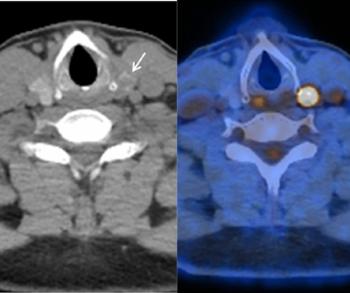
Pre-Operative MRI Shows Benefit for Younger Women Diagnosed with Breast Cancer
Capturing the scan can reduce number of repeat surgeries and pinpoint additional cancers.
Pre-operative breast MRI can benefit women who are diagnosed with breast cancer before age 35, according to researchers from Asan Medical Center in South Korea.
Not only can the scan reduce the rate of repeating surgeries without increasing the rate of overall mastectomy, but it can also detect additional cancers with high sensitivity. Radiologist Ah Reum Park presented these results on behalf of her team during this year's Radiological Society of North America annual meeting on Nov. 29.
Although breast cancer in this age group is rare, she said, when it occurs, it is discovered in a more advanced stages, is more aggressive, and leads to worse outcomes. This research shows pre-operative MRI can have a positive impact on detection and treatment.
Park’s team retrospectively reviewed patient data from 964 women who were diagnosed with breast cancer between January 2007 and December 2017. Of the group, 665 had either 1.5T or 3T MRIs, and 299 did not have imaging.
The team examined 19 baseline variables, including age at diagnosis, breastfeeding history, oral contraceptive use, BRCA mutation, and histologic type, along with other features, and they focused on three outcomes – initial mastectomy rate, repeat surgery (either breast-conserving or mastectomy), and overall mastectomy rate. In addition, they investigated whether pre-operative MRI changed any surgical plans.
Before adjusting for confounding factors, Park and her colleagues determined that women who underwent MRI were more likely than women who did not have imaging to have dense breasts and a BRCA mutation, as well as be ER+ and PR+. They also found that women who did not have imaging were more likely to be symptomatic, married, mothers, have lymph node metastasis, and have pathologies at stages 2 or 3.
Based on their analysis, among the women who had pre-operative MRI, the scans identified additional suspicious lesions in 178 of 665 patients – 26.8 percent – and nearly half of those – 88 lesions – were confirmed to be malignant. Specifically, 76 lesions were ipsilateral, four were contralateral three were both, and five were ipsilateral lymph nodes. Ultimately, the team determined, these results changed surgical decisions in 99 of 665 cases, as well. Of those changes, 62 (62.6 percent) were considered appropriate, and 37 (37.4 percent) were deemed unnecessary.
In addition, when the team adjusted for confounding factors, the MRI group had a significantly higher odds ratio of having an initial mastectomy than women who did not have imaging, but they had significantly lower odds of undergoing repeat surgery (OR=0.126, P <0.001). They also determined that the MRI group did not experience an increase in their overall mastectomy rate.
Given these results, Park said, the team concluded that pre-operative biopsy should be obtained for any additional detected lesions that might be suspicious. Doing so could help providers and patients avoid over-treatment.
For additional RSNA coverage, click
Newsletter
Stay at the forefront of radiology with the Diagnostic Imaging newsletter, delivering the latest news, clinical insights, and imaging advancements for today’s radiologists.




























